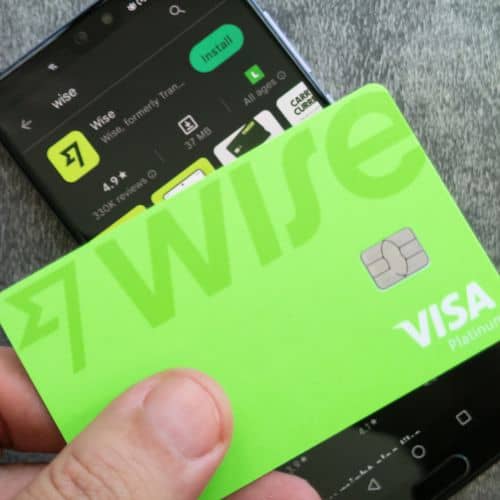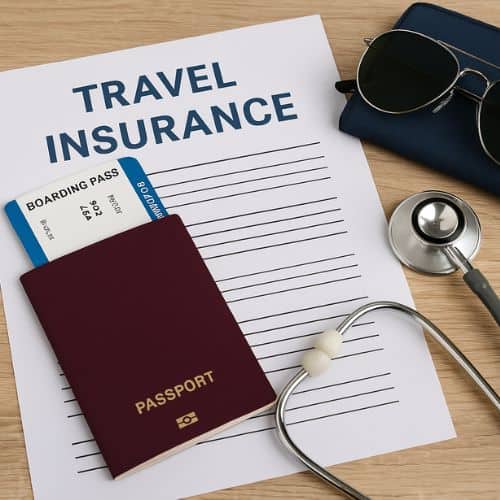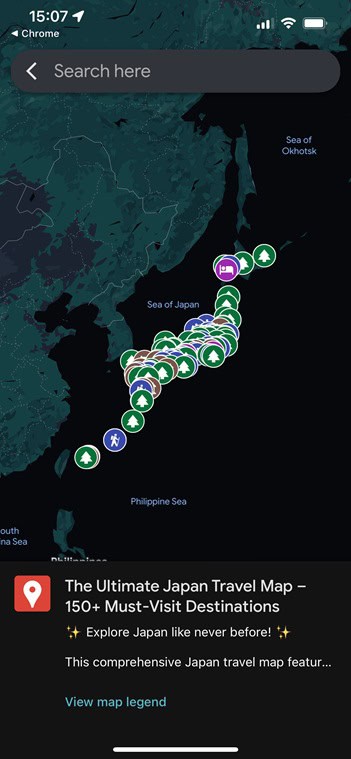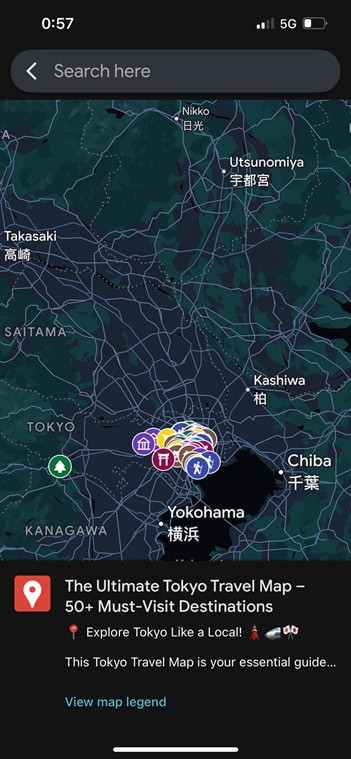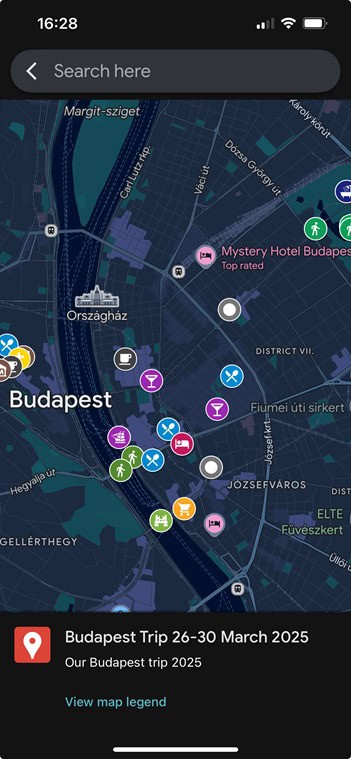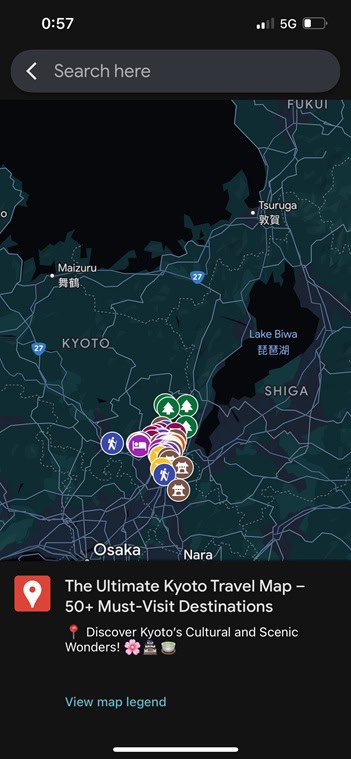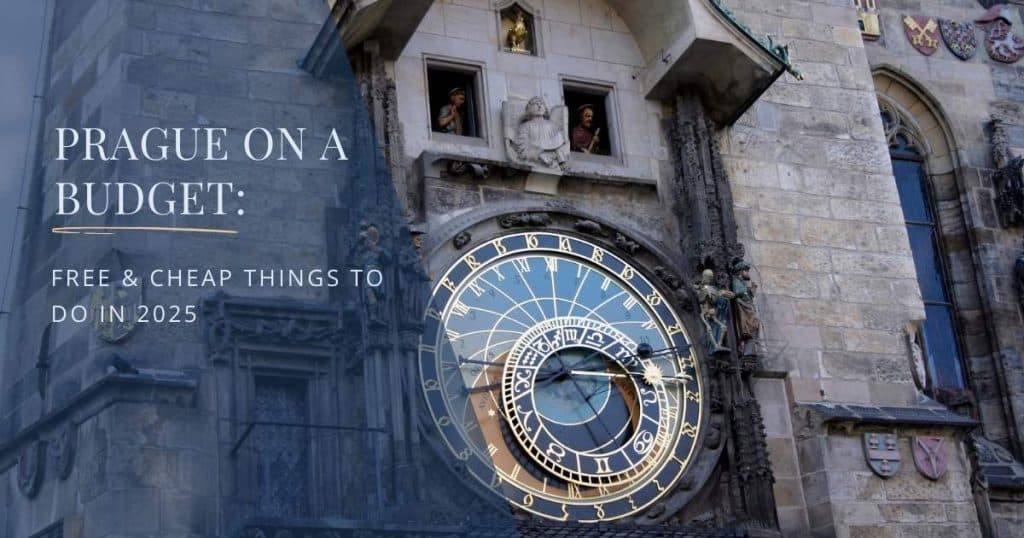Your Budapest Adventure Starts Here
Planning your first trip to Budapest? Get ready to fall in love. Hungary’s capital is a city of contrasts — grand yet cozy, historic yet modern, elegant yet buzzing with youthful energy. From thermal baths and ornate bridges to ruin pubs and cozy cafés, Budapest welcomes every kind of traveler, especially families and cultural explorers looking for meaningful adventures.
But like every great destination, there are a few things you’ll want to know before you arrive. Whether it’s dodging tourist traps, understanding how public transport works, or navigating currency quirks, these practical insider tips will help you feel more confident and prepared — so you can spend less time worrying and more time soaking in the magic of the Danube.
Here’s everything you need to know before you go.
TL;DR (Too Long; Didn’t Read)
Visiting Budapest for the first time? This guide walks you through the essentials — from how to use public transport and avoid currency pitfalls, to food customs and common tourist traps. You’ll also find local etiquette tips, family-friendly advice, and tools to stay connected on the go. It’s everything you need for a smooth, culturally rich experience in Hungary’s capital.
Get Your FREE London Travel Map + 5 Must-Have Travel Resources!
Plan smarter, stress less, and make every trip unforgettable with these exclusive tools—100% FREE!
📩 Sign up now & download instantly!

1. Understanding Hungarian Forints 💸
Currency Basics
First things first: Budapest uses the Hungarian Forint (HUF), not the Euro. This surprises many travelers who expect the Euro to be widely accepted in European capitals — but in Hungary, cash is king, and the Forint is the only currency that works.
At the time of writing, 1 EUR = approximately 390–400 HUF, but the exchange rate can vary. For reference:
- A coffee costs ~800 HUF
- A museum ticket costs ~3,000–4,000 HUF
- A three-course meal at a mid-range restaurant might run ~7,000–10,000 HUF per person
Best Way to Pay
While many places do accept cards, small vendors, food stalls, and even some cafés may only take cash. Avoid using exchange kiosks at the airport or touristy areas — they often offer poor rates.
Instead, use a currency exchange app like Wise, which gives you the mid-market rate with very low fees. You can use the Wise debit card to withdraw cash from local ATMs and pay like a local, saving significantly over traditional banks or currency booths. It’s particularly handy for families trying to stick to a budget or split expenses during multi-generational travel.
2. Skip the Airport Scams — Use Reputable Transport Services 🚖
How to Get From the Airport to the City Center
Budapest Ferenc Liszt International Airport is well-connected to the city, but it’s also a hotspot for common tourist pitfalls.
The safest and most affordable transfer options are:
- Főtaxi: The official airport taxi partner. They operate from a booth just outside the terminal. Prices are fixed by zone (expect ~9,000–10,000 HUF to the city center).
- Bus 100E: This direct shuttle runs every 15–30 minutes between the airport and Deák Ferenc tér (downtown). Tickets cost 2,200 HUF and can be purchased from vending machines or via the BudapestGo app.
Rideshare or Not?
Uber does not operate in Budapest. Locals use Bolt, a popular and reliable alternative, which offers ride-hailing at affordable prices. Just download the app and you’re good to go.
Airport to City Center: Quick Comparison
| Option | Typical Cost | Time | Where to Find | Good For | Luggage & Strollers | How to Pay |
|---|---|---|---|---|---|---|
| Főtaxi (Official Airport Taxi) | ~9,000–12,000 HUF (to city center) | ~25–35 min (traffic-dependent) | Official Főtaxi booth outside the arrivals hall | Families, late arrivals, lots of bags | Trunk space; child seats sometimes available on request | Metered fare; pay by card or cash (HUF) |
| 100E Airport Bus | Special ticket (100E) ~2,200 HUF | ~35–50 min to Deák Ferenc tér | Signed BKK bus stop at Terminal 2 | Budget-friendly, solo/couples, day-time travel | Luggage racks; fold strollers before boarding | BudapestGo app or ticket machines (buy the 100E ticket) |
| Bolt (Rideshare) | ~8,000–12,500 HUF+ (varies with demand) | ~25–35 min (traffic-dependent) | App pick-up curbside (follow app instructions) | App users, small groups, door-to-door convenience | Depends on car size; request larger vehicle if needed | In-app payment (card) |
💡 Tip: For red-eye flights or with kids + heavy luggage, Főtaxi or Bolt is usually the smoothest. If you’re watching your budget, the 100E is excellent value.
3. Budapest’s Public Transport is Stellar — If You Know How to Use It 🚌🚋
Budapest boasts one of Europe’s most efficient and affordable public transport systems, with metro lines, trams, buses, and trolleybuses reaching every corner of the city.
Transport Passes & Ticketing Tips
You can choose from:
- Single ticket – 450 HUF
- 10-ticket block – 4,000 HUF
- 24-hour travelcard – 2,500 HUF
- 72-hour pass – 5,500 HUF
- 7-day pass – 6,300 HUF
- Check here for more info on transport tickets passes and types, including up-to-date pricing.
Tickets must be validated (either by punching at orange machines or scanning QR codes) before boarding — even for trams or buses. Forgetting to validate can lead to an on-the-spot fine of 8,000 HUF or more.
How to Validate Tickets in Budapest
- Choose your ticket/pass: single, blocks, or 24/72-hour/7-day travelcards (BudapestGo or paper).
- Paper tickets: Validate before boarding by stamping them in the orange machines (at tram/bus stops or metro entrances). For the metro, you’ll validate at the gates/validators before entering.
- Mobile tickets (BudapestGo): Purchase in the app, then activate before travel and follow any prompt to scan a QR code when required.
- During inspections: Keep your validated ticket or active pass handy. Ticket inspectors can check onboard or at station exits.
- Avoid fines: Unvalidated or inactive tickets can result in an on-the-spot fine (often around 8,000 HUF or more). When in doubt, use a travelcard.
👶 Family tip: Leave a few extra minutes at the first stop to validate tickets calmly before wrangling strollers and bags onto the vehicle.
Recommended Travel Apps
For smooth navigation:
- BudapestGo: Official transport app for route planning and mobile ticketing
- Google Maps: Accurate for real-time directions
- Airalo: For an instant eSIM solution, giving you mobile data on arrival — perfect for using maps and ticket apps without relying on spotty Wi-Fi
🚆 Planning to travel beyond Budapest? While BudapestGo covers local transport, Omio is ideal for booking trains, buses, or flights to nearby cities like Vienna or Prague. It lets you compare options in one place, saving time and avoiding ticket-office stress.
Especially useful for families juggling strollers, bags, and restless kids!
🗺️ Want a Smooth, Stress-Free Budapest Itinerary?
Exploring castles, markets, and thermal baths is way more fun when the logistics are taken care of. Let our free AI itinerary builder craft a custom day-by-day plan for your Budapest adventure — tailored to your travel dates, pace, and interests.
✨ No spreadsheets, no stress — your perfect Budapest journey starts here:
4. Don’t Let Language Barriers Trip You Up 🗣️
English is Common, But Not Universal
Most people in central Budapest — hotel staff, tour guides, and young adults — speak basic to intermediate English. But venture into neighborhood markets or mom-and-pop bakeries, and Hungarian quickly becomes dominant.
While Hungarians are often warm and helpful, the language itself is famously complex. Showing effort to speak a few words goes a long way in winning smiles and better service.
Easy Phrases to Know
- Hello: Szia (SEE-yah)
- Thank you: Köszönöm (KÖ-se-nöm)
- Yes: Igen (EE-gen)
- No: Nem (Nem)
- Goodbye: Viszlát (VEES-laht)
📌 Quick tip: Use Google Translate’s camera function to scan menus, signs, or even train station info boards.
Need More Help Planning Your Trip?
5. Avoid the Tourist Traps and Hidden Fees 💰
Restaurant Red Flags
It’s no secret that touristy areas in Pest — especially near Váci Street — are filled with overpriced restaurants, aggressive greeters, and surprise fees.
Here’s what to watch for:
- No menu posted outside
- Staff pushing you to enter
- No mention of “szervízdíj” (service charge) — sometimes this is sneakily added at 15–20%
Opt for restaurants frequented by locals in the Jewish Quarter, Újlipótváros, or the 7th district for better value and authentic atmosphere.
Currency Conversion Scams
Always pay in the local currency when using your card. If a terminal offers to charge you in your home currency, it will almost certainly apply a Dynamic Currency Conversion (DCC) fee — resulting in a much worse rate.
With Wise, you avoid this trap entirely — it automatically processes in HUF and saves you from inflated conversions.
Souvenir Overpricing in Váci Street
Avoid souvenir stands here unless you’re in a pinch. Instead:
- Central Market Hall: Best for food-related gifts (paprika, honey, local wines)
- WAMP Design Market (monthly): Unique gifts from Hungarian designers and artists
Tipping & Service Charges in Budapest
Hungary has its own customs around tipping, and it can catch first-time visitors off guard. Here’s what you need to know:
- Service charge (“szervízdíj”): Many mid- to higher-end restaurants automatically add a 10–15% service fee to your bill. This will usually be listed at the bottom of the menu or printed on your receipt.
- If service charge is included: You don’t need to tip extra unless the service was outstanding. Locals typically just pay the total.
- If service charge is not included: Leaving 10–12% of the bill is standard. In casual cafés or bars, rounding up to the nearest 500 or 1,000 HUF is perfectly fine.
- Paying by card: Always check the terminal screen carefully. Politely decline any “pay in your home currency” offer to avoid costly conversion fees (Dynamic Currency Conversion).
- Cash tips: If you prefer to leave cash, hand it directly to the server rather than leaving it on the table — it’s considered more respectful in Hungary.
💡 Traveler tip: Double-check receipts in touristy areas. If a “szervízdíj” has already been applied, there’s no need to add another tip on top.
6. Mind the Weather — It Can Surprise You 🌦️
Seasons Matter in Budapest
- Spring (Mar–May): Unpredictable — pack layers and waterproofs
- Summer (Jun–Aug): Hot days (30°C+), but breezy evenings by the Danube
- Autumn (Sep–Nov): Crisp air, golden foliage — ideal for walking tours
- Winter (Dec–Feb): Cold, sometimes snowy — the Danube may freeze
Despite the chill, winter can be magical. Christmas markets pop up, and thermal baths become even more appealing.
What to Pack (By Season)
- Comfortable walking shoes (cobblestones everywhere!)
- Reusable water bottle
- Portable umbrella
- Layers for unpredictable weather
🎒 Families: Our free GaiaGazer Family Travel Packing Checklist is perfect for preparing little ones for the trip — especially during shoulder seasons.
Discover Our Ultimate Collection of Travel Maps
7. Hungarian Food Is Delicious… But Different 🍲
Food Culture Overview
Expect hearty stews, creamy sauces, and paprika in just about everything. Meals tend to be generous and filling — and oh-so-good.
Water is safe to drink from the tap, but restaurants often serve bottled unless you ask.
- Wait to be seated (even if the restaurant seems open)
- Don’t expect lightning-fast service — mealtimes are leisurely
- Tipping 10–15% is common and appreciated (check if it’s included)
Must-Try Dishes
- Gulyás: A beef soup (not thick like “goulash” elsewhere)
- Lángos: Fried dough topped with sour cream and cheese
- Kürtőskalács (Chimney Cake): Sweet, spiral pastry best enjoyed at markets
Try local eats at:
- Street Food Karaván (Great for casual dining with kids)
- Menza (Trendy and affordable Hungarian classics)
- Fővám Tér Market Stalls (Iconic local experience)
8. Beware of Common Scams in the City 🕵️♂️
Budapest is generally a safe city, even for solo travelers and families. But like any major European destination, it has its fair share of tourist scams — most of them more annoying than dangerous.
Scams to Watch Out For
- Rigged Bars: A classic scam where a friendly local (often attractive) invites you for a drink at a “great place.” After ordering, you’re hit with a bill of 100,000+ HUF and can’t leave without paying.
- Petition Scams: Someone stops you with a clipboard asking you to sign a petition — sometimes claiming it’s for the disabled or deaf community. While you’re distracted, an accomplice may try to pickpocket you.
- Taxi Tricks: Avoid unlicensed taxis that quote a “flat rate.” Always use the official yellow taxis with logos and meters.
Safety Reminders
- Stay in well-lit areas at night
- Keep bags zipped and phones in front pockets in crowded places like Váci Street or metro lines
- Use VisitorsCoverage for peace of mind in case of trip mishaps, medical needs, or lost belongings — especially crucial when traveling with kids or aging parents
9. Sundays and Public Holidays Feel… Quiet 💤
Don’t be surprised if you head out on a Sunday and find half the city asleep.
Planning Around Closures
On Sundays and public holidays:
- Many small shops and pharmacies are closed
- Some restaurants only open for lunch or not at all
- Grocery stores have limited hours or remain closed
Good news? Thermal baths, museums, and parks stay open — so it’s a great excuse to plan a more relaxed day.
Download These Before You Go
- TripIt: Keeps your itinerary organized in one place — especially helpful for families with lots of moving parts
- Google Translate: Works offline; use the photo/camera mode for reading menus and signs
- BudapestGo: For navigating limited transport schedules on holidays

Test Your Travel Smarts with Our Quizzes!
Think you know your way around the world? From cultural traditions to hidden gems, our short and playful travel quizzes are the perfect way to challenge yourself, learn something new, and maybe even spark your next adventure. Great for anyone who loves a bit of travel trivia fun!
10. Budapest is Very Walkable — But Be Street-Savvy 🚶♀️
Budapest is split by the Danube into two distinct halves:
- Buda (west): hilly and green, with castles and panoramic views
- Pest (east): flat and urban, packed with cafés, nightlife, and local culture
Pedestrian-Friendly, Mostly
The city center is easy to explore on foot, but:
- Many sidewalks are narrow or shared with scooters
- Cobblestones can be tricky with strollers or for those with mobility issues
- Crosswalks don’t always have signals — look both ways!
Best Walks
- Danube Promenade: From Elizabeth Bridge to the Parliament building — day or night
- Castle Hill: Walk from Buda Castle to Fisherman’s Bastion, enjoying postcard-worthy views
- Andrássy Avenue: A grand boulevard that ends at Heroes’ Square and City Park
🧳 Pro Tip: Wear good shoes. We’ve seen travelers try to conquer Gellért Hill in flip-flops — they did not enjoy it.
11. Thermal Baths Are a Must — But There’s Etiquette 💦
You simply can’t visit Budapest without soaking in one of its famous thermal baths. But these aren’t your typical hotel hot tubs — they’re a mix of wellness center, social hangout, and local tradition.
How to Visit Like a Local
- Bring your own towel and flip-flops — rentals are expensive and low-quality
- Swim caps are required in lap pools (but not in thermal pools)
- Check gender schedules at older, traditional baths (some have men-only or women-only days)
- Buy tickets online in advance, especially on weekends or holidays
Recommended Baths
- Széchenyi Baths: Huge, iconic, family-friendly — especially stunning in winter with steam rising in the cold air
- Gellért Baths: More elegant, Art Nouveau-style — better suited for couples or cultural travelers
- Lukács Baths: Less touristy, frequented by locals — a great hidden gem with a peaceful vibe
✨ These places are part of the daily lives of many locals — not just for tourists. Be respectful, shower before entering, and enjoy the deeply relaxing experience.
Budapest Thermal Baths at a Glance
| Bath | Family-Friendly? | Swim Caps? | Price Range (relative) | Best Time to Visit |
|---|---|---|---|---|
| Széchenyi | Yes — large outdoor pools, lively atmosphere | Required in lap pools; not needed in thermal pools | $$ (mid to upper-mid) | Weekday mornings for fewer crowds; winter evenings for dreamy steam |
| Gellért | Moderate — elegant, quieter; great for couples/cultural travelers | Required in lap pools; not needed in thermal pools | $$$ (premium) | Weekdays late morning/early afternoon for a serene vibe |
| Lukács | Yes/Calm — more local, relaxed feel | Required in lap pools; not needed in thermal pools | $$ (mid) | Early mornings or late afternoons on weekdays |
🧴 Note: Bring your own towel and flip-flops; rentals are available but pricier and limited. Book ahead on weekends/holidays.
🎟️ Want to experience Budapest beyond the guidebooks?
Whether you’re craving a relaxing thermal bath session, a family-friendly river cruise, or a guided walk through Castle Hill, many of Budapest’s top cultural attractions and unique tours can be booked in advance through trusted platforms like GetYourGuide and Viator. You’ll often find skip-the-line options, combo deals, and exclusive local experiences.
If availability is limited, be sure to check the official attraction websites for the most up-to-date info on hours and onsite ticketing.
Where to Stay in Budapest
Choosing the right base makes all the difference in Budapest. Here are four great districts, each with a distinct vibe and practical perks for different travel styles.
- District V (Belváros – City Center): The most central, walkable area for first-timers. You’ll be steps from the Danube, the Parliament, cafés, and metro hubs. Expect classic architecture, convenient transport, and higher prices—worth it if you want a car-free, easy base.
- District I (Castle District): Peaceful and historic, perched on the Buda side with cobblestone charm and panoramic views. Ideal for couples, photographers, and travelers who prefer quiet nights; plan on more hills and slightly longer journeys to Pest’s nightlife.
- District VII (Jewish Quarter): Buzzing and creative with ruin pubs, street food courts, indie shops, and murals. Great for foodies and night owls; families may prefer streets just off the main nightlife corridors for quieter evenings.
- District XIII (Újlipótváros): Local, laid-back neighborhood near the river and Margaret Island. Perfect for longer stays, families, and travelers seeking café culture, parks, playgrounds, and easy tram links without the crowds.
Ready to compare and book? Check live deals and flexible options on Booking.com, Expedia, Hotels.com, and Trivago to compare prices across multiple sites.
🛎️ Want more detail? Dive into our full guide: Where to Stay in Budapest: Best Areas & Neighborhoods for Every Traveler
Memorable Mentions ✨
Not everything fits neatly into a list, but here are a few more tips worth knowing:
- Evening Danube River Cruises: The city sparkles after dark. Whether you choose a dinner cruise or a budget-friendly ride, this is one of the most magical ways to see Budapest.
- Ruin Bars: Szimpla Kert may be overhyped, but it’s worth seeing once. Families might just peek inside during the day — the decor alone is fun for kids.
- Budapest Eye: A large Ferris wheel near Erzsébet Square. A bit pricey, but gives a nice view — great for travelers with children or those with limited time.
Conclusion – You’re Ready for Budapest 🧳
A trip to Budapest is like stepping into a storybook — one filled with thermal steam, glowing lantern-lit streets, hearty meals, and friendly smiles. By equipping yourself with these insider tips, you’re not just avoiding headaches — you’re unlocking a smoother, deeper, and more authentic travel experience.
Whether you’re strolling hand-in-hand through Buda Castle, navigating the metro with your kids in tow, or enjoying your first taste of gulyás, remember: a little preparation goes a long way.
📣 Have your own Budapest tip to share? Or a funny lost-in-translation moment? Leave us a comment or tag @gaiagazer on Instagram — we love hearing your stories from the road!
Your Ultimate Travel Companion
Frequently Asked Questions About Visiting Budapest
Q: What’s the best way to get Hungarian forints before or during my trip?
A: The most cost-effective way is to use a card like Wise, which offers excellent exchange rates and low ATM withdrawal fees. Avoid airport kiosks or street exchange booths in touristy areas, as they tend to offer poor rates and hidden fees.
Q: Is Budapest a good destination for families with young children?
A: Absolutely. Budapest is walkable, stroller-friendly in most areas, and offers attractions that appeal to all ages — from thermal baths with kids’ pools to boat rides on the Danube. Many restaurants are casual and kid-welcoming, and the city’s parks and markets offer plenty of space to explore.
Q: How do I get from Budapest Airport to the city center?
A: The easiest options are the official Főtaxi service at the airport or the 100E airport bus, which runs frequently to downtown Budapest. Rideshare apps like Bolt are also reliable and widely used. Uber is not available in Hungary.
Q: Are Budapest’s thermal baths suitable for first-time visitors?
A: Yes, and they’re a highlight of any Budapest trip. First-timers should consider Széchenyi for its grandeur and family-friendliness or Gellért for a quieter, elegant atmosphere. Just remember to bring a towel, flip-flops, and a swim cap for certain pools.
Q: What should I budget for daily expenses in Budapest?
A: Budapest is relatively affordable by European standards. Budget travelers can spend around €40–60 per day, while mid-range travelers might budget €80–120. Costs include food, local transport, attraction tickets, and occasional splurges like a thermal bath or river cruise.
Q: What’s the most efficient way to plan a Budapest itinerary?
A: For a hassle-free approach, try Gaia Gazer’s free AI-powered itinerary builder, which creates a day-by-day plan based on your preferences and travel style. It’s especially helpful for families or cultural travelers looking to maximize their time without getting overwhelmed.
Q: Are public transport tickets in Budapest valid across all types of transport?
A: Yes. A single validated ticket or travel pass works across metro, bus, tram, and trolleybus lines. Make sure to validate paper tickets before boarding or use the BudapestGo app to buy and scan digital passes.
Q: When is the best time to visit Budapest for fewer crowds but pleasant weather?
A: Late spring (May to early June) and early fall (September) offer the best balance — mild temperatures, thinner crowds, and vibrant cultural life. Winter can also be magical, especially during the Christmas market season, but it gets cold.
📌 Love cultural travel? Explore more ideas on Pinterest →

